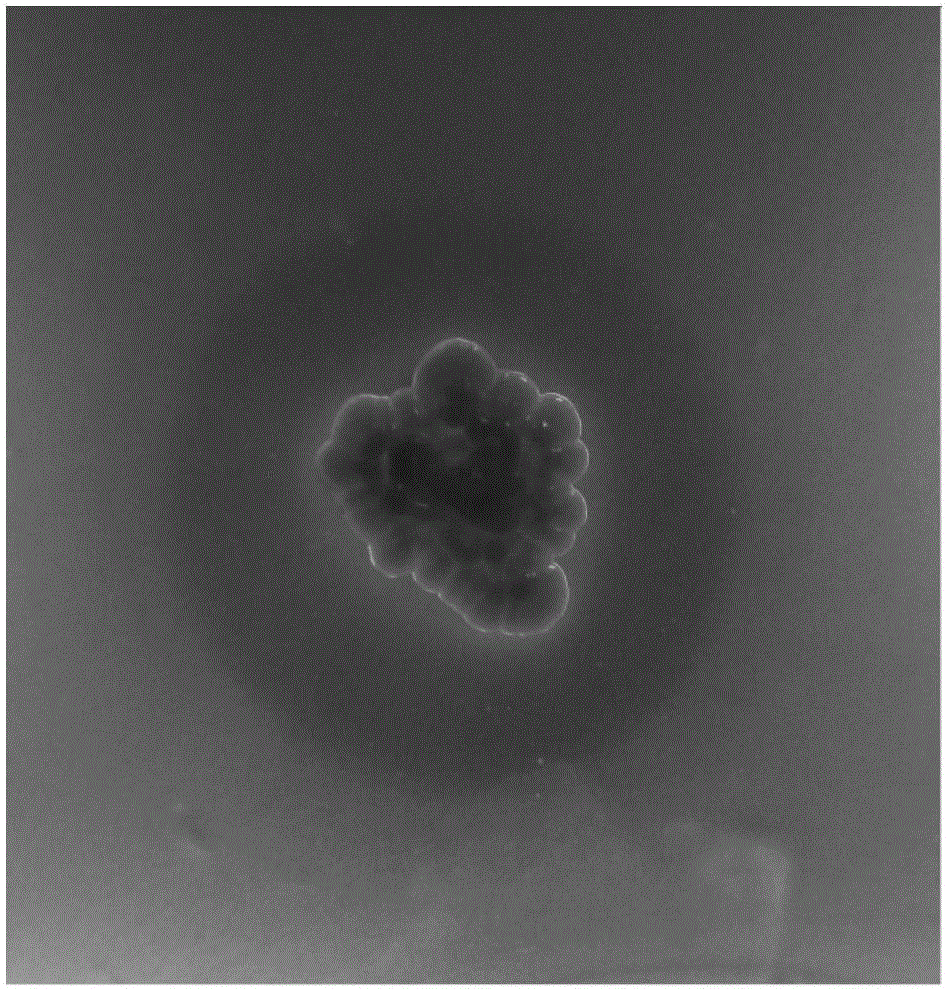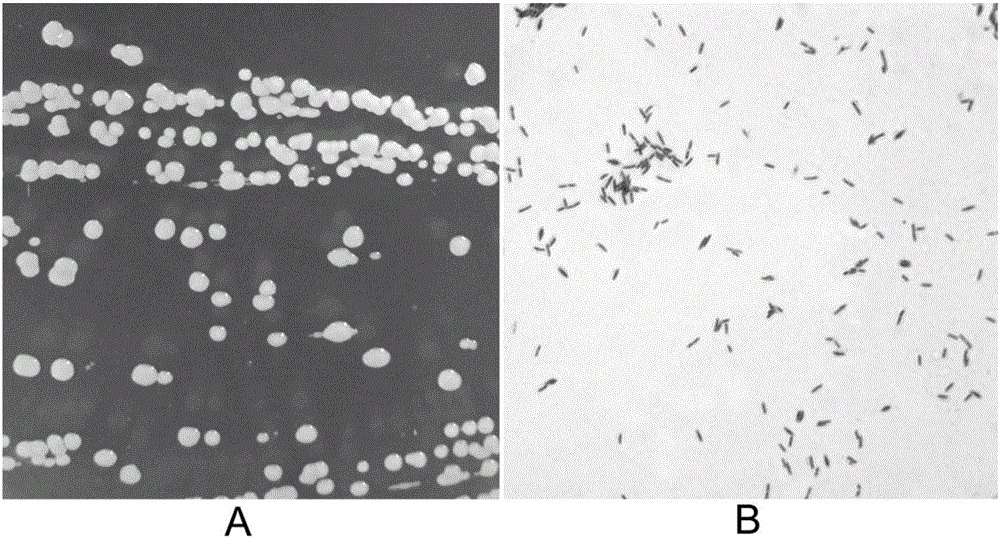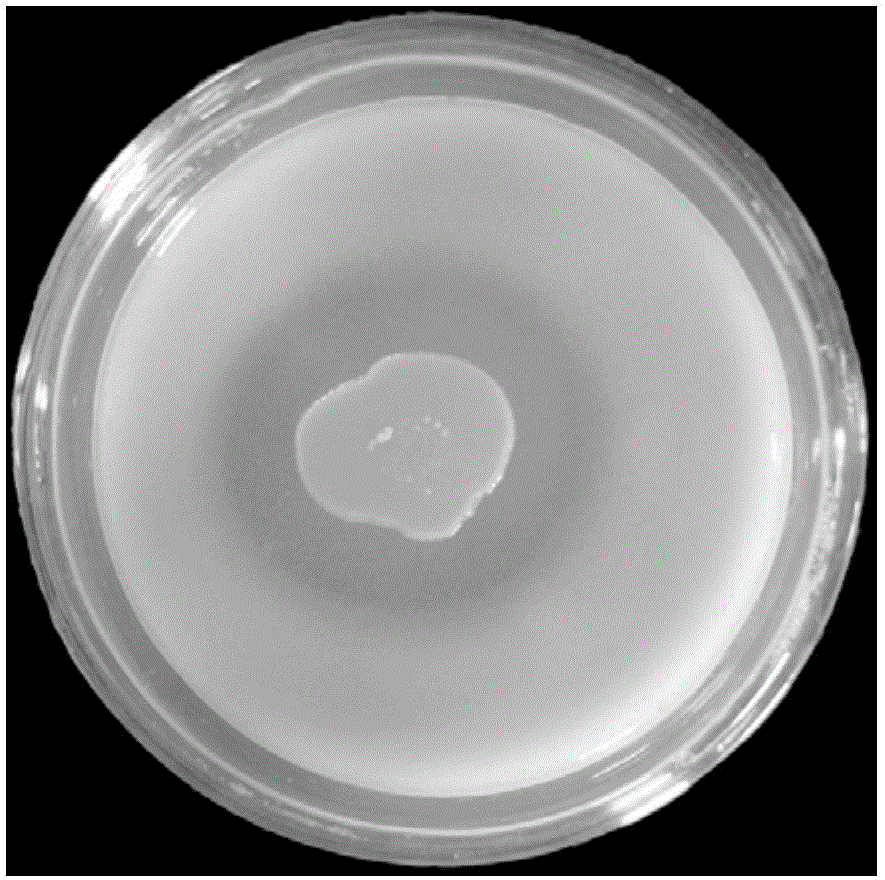Bacteria strain of antagonistic plant pathogenic bacteria and application of bacteria strain
A technology of plant pathogenic bacteria and strains, applied in the field of microorganisms, can solve problems such as prevention and control of drug residues and environmental pollution, and achieve the effect of efficient prevention and control
- Summary
- Abstract
- Description
- Claims
- Application Information
AI Technical Summary
Benefits of technology
Problems solved by technology
Method used
Image
Examples
Embodiment 1
[0062] Embodiment 1 Isolation, screening and identification of Paenibacillus profundus (Paenibacillus profundus) XZQ-20 of the present invention
[0063] 1. Isolation and screening of Paenibacillus profundus XZQ-20
[0064] The bacterial strain of the present invention is collected from poplar rhizosphere soil on the campus of Beijing Forestry University in Haidian District, Beijing.
[0065] 1A) Take 5g of the soil at the place where the thickness of poplar rhizosphere soil layer is 5-25cm, place it in a triangular flask filled with 45mL of sterile water, shake it at 28°C at 180rpm for 30min on a shaker, let it stand, and the obtained bacterial suspension liquid (ie 10 -1 The soil dilution solution, that is, the soil solution diluted 10 times); Then use 10 times of gradient dilution method to dilute successively to obtain 10 -3 、10 -4 、10 -5 Concentration gradient diluent; then take 0.1mL from each concentration gradient suspension and apply it on the LB medium plate with...
Embodiment 2
[0086] Embodiment 2 Exploration of the biological characteristics of Paenibacillus profundus (Paenibacillus profundus) XZQ-20 of the present invention
[0087]1A) Pick a loop (inoculation loop) from the Paenibacillus profundus XZQ-20 strain activated on the slant, and inoculate it into 100mL LB liquid medium (each 1000mL contains tryptone 10g, yeast extract 5g, NaCl 10g, pH 7.0-7.2) in a 250mL Erlenmeyer flask, then cultured at 30°C and 200rpm with shaking for 1d to prepare the seed liquid of Paenibacillus profundus XZQ-20 strain, wherein the seed liquid of Paenibacillus profundus XZQ-20 strain OD 600 The value is about 1.564.
[0088] 1B) Inoculate the Paenibacillus profundus XZQ-20 strain seed liquid into the 100mL Erlenmeyer flask containing 40mL of different salt (NaCl) concentrations and pH values of the NB culture solution according to the inoculation amount of 1% (V / V), at 30°C After 2 days of shaking culture at 200rpm, 0.4mL of Paenibacillus profundus XZQ-20 strain...
Embodiment 3
[0093] Embodiment 3 Determination of protease-producing ability of Paenibacillus profundus (Paenibacillus profundus) XZQ-20 bacterial strain of the present invention
[0094] 1A) Pick a circle of activated Paenibacillus profundus XZQ-20, and plant it in the center of a plate filled with skimmed milk medium (each 1000mL contains 50g skimmed milk powder, 15g agar, pH 7.2-7.4) , and then place the plate in a constant temperature incubator at 30°C for upside-down culture, and observe whether the skimmed milk around the colony and on the plate is decomposed and becomes transparent after 1, 3, 5, and 7 days respectively. The appearance of a transparent circle means that the strain can produce protease, and the absence of a transparent circle means that the strain cannot produce protease.
[0095] The assay results show that the antagonistic bacteria Paenibacillus profundus XZQ-20 strain can form an obvious transparent circle ( Figure 4 ), showing that Paenibacillus profundus XZQ-2...
PUM
 Login to View More
Login to View More Abstract
Description
Claims
Application Information
 Login to View More
Login to View More - R&D
- Intellectual Property
- Life Sciences
- Materials
- Tech Scout
- Unparalleled Data Quality
- Higher Quality Content
- 60% Fewer Hallucinations
Browse by: Latest US Patents, China's latest patents, Technical Efficacy Thesaurus, Application Domain, Technology Topic, Popular Technical Reports.
© 2025 PatSnap. All rights reserved.Legal|Privacy policy|Modern Slavery Act Transparency Statement|Sitemap|About US| Contact US: help@patsnap.com



